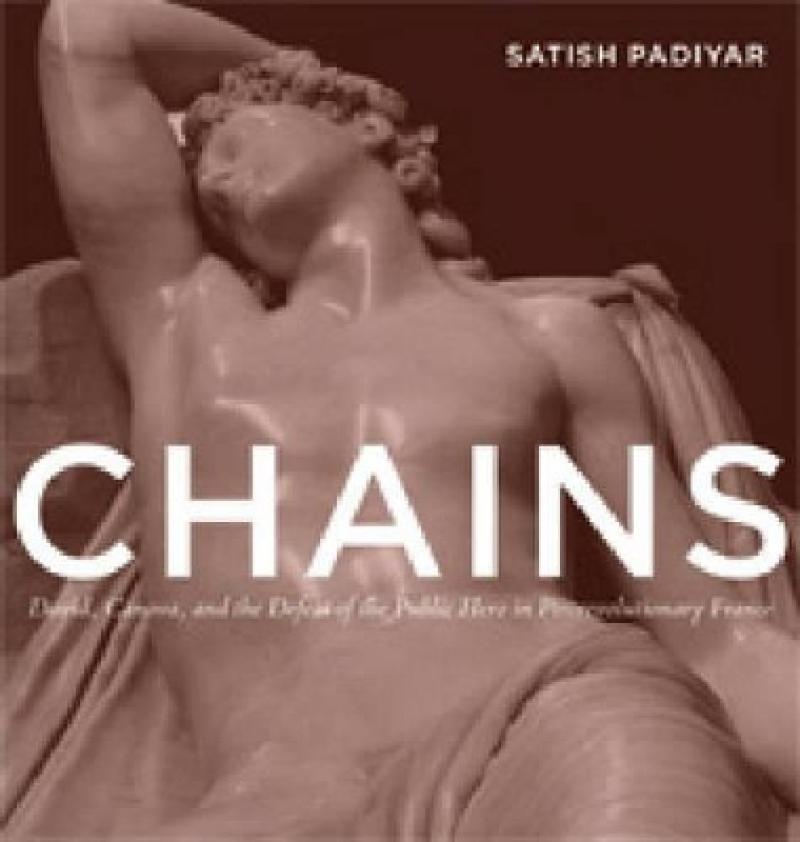<p>“An outstanding work of great importance. . . . <i>Chains</i> uses art to make broader claims about subjectivity in general and gay subjectivity in particular that are entirely novel and provocative.”</p><p>—Ewa Lajer-Burcharth, Harvard University</p>
<p>“This is an unusually intelligent and original study. It offers, by way of a detailed discussion of David’s most significant and ideologically charged late painting, <i>Leonidas at the Pass of Thermopylae</i>, a truly novel perspective on the larger significance of new tendencies in French neoclassical painting and aesthetics in the complex and politically fraught postrevolutionary period of the early nineteenth century.”</p><p>—Alex Potts, University of Michigan</p>
<p>“The writings are thoughtfully arranged and the images included are mostly color. Substantive notes and an appendix enhance the text.”</p><p>—T.L. Wilson <i>Choice</i></p>
<p>“Kantian and psychoanalytic versions of subjectivity sit back-to-back. To read this lucid and complex book-–also beautifully produced-–is to feel how these chains, intertwining, tug at us still.”</p><p>—Brendan Prenderville <i>Art History</i></p>
<p>“Intellectual historians will no doubt have much to say, pro and con, about the claims that surround Padiyar’s account of <i>Leonidas at Thermopylae</i>. Whatever their arguments, however, they will learn a great deal about art along the way. Art historians, for their part, will encounter an important emerging voice in the discipline that defies safe predictability.”</p><p>—Thomas Crow <i>Journal of Modern History</i></p>
One of Jacques-Louis David’s most ambitious and darkly enigmatic paintings, Leonidas at the Pass of Thermopylae, hangs today in the Louvre, largely ignored. Focusing on this painting, Chains embarks on a discourse about the perception of the body, sexuality, and subjectivity in early nineteenth-century European art.
In addition to David, Chains explores the sculptural oeuvre of David’s contemporary and rival, Italian sculptor Antonio Canova. Padiyar argues that, like David’s postrevolutionary work, Canova’s innovative sculptures embodied a new, distinctively modern type of subjectivity. The book aims to take a fresh view of the status of the male body in the work of these two late neoclassical artists by linking them in novel, sometimes unexpected ways with key figures of the late Enlightenment. In postrevolutionary Europe, philosophical and literary figures such as Immanuel Kant and the Marquis de Sade pushed the language of neoclassicism to its limits. Chains argues that such innovations produced a new, distinctively sexed, politicized, and aestheticized heroic male body that emerged as an incidental aftereffect of the French Revolution.
Contents
List of Illustrations
Acknowledgments
Introduction
1. Heroism After the French Revolution: Davids Leonidas at Thermopylae
2. Inheriting Greek Eros: Anacreontism and Homosexual Desire
3. Kant and the Postrevolutionary Subject: The Aesthetics of Freedom
4. Subject and Surface: Canova and the Reinvention of Classical Sculpture
5. Sade/David, in Chains
Appendix
Select Bibliography
Index
Produktdetaljer
Om bidragsyterne
Satish Padiyar is an Honorary Research Fellow at University College London. He is an Associate Research Scholar at The Courtauld Institute of Art, London, where he teaches eighteenth- and nineteenth-century French art.
